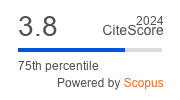Shipping Canals in Transition
| Views: | 1706 | | | Downloads: | 929 |
Shipping canals have supported maritime traffic and port development for many centuries. Radical transformations of these shipping landscapes through land reclamation, diking, and canalization were celebrated as Herculean works of progress and modernity. Today, shipping canals are the sites of increasing tension between economic growth and associated infrastructural interventions focused on the quality, sustainability, and resilience of natural systems and spatial settlement patterns. Shifting approaches to land/water relations must now be understood in longer political histories in which pre-existing alliances influence changes in infrastructure planning. On the occasion of the 150th Anniversary of the New Waterway (Nieuwe Waterweg), the Leiden-Delft-Erasmus universities PortCityFutures Center hosted an international symposium in October 2022 to explore the past, present, and future of this channel that links Rotterdam to the North Sea. Symposium participants addressed issues of shipping, dredging, and planning within in the Dutch delta, and linked them to contemporary debates on the environmental, spatial, and societal conditions of shipping canals internationally. The thematic issue builds on symposium conversations, and highlights the importance of spatial, economic, and political linkages in port and urban development. These spatial approaches contribute to more dynamic, responsive strategies for shipping canals through water management and planning.
© Carola Hein, Sabine Luning, Han Meyer, Stephen J. Ramos, Paul van de Laar. This is an open access article distributed under the terms of the Creative Commons Attribution 4.0 license (http://creativecommons.org/licenses/by/4.0), which permits any use, distribution, and reproduction of the work without further permission provided the original author(s) and source are credited.


